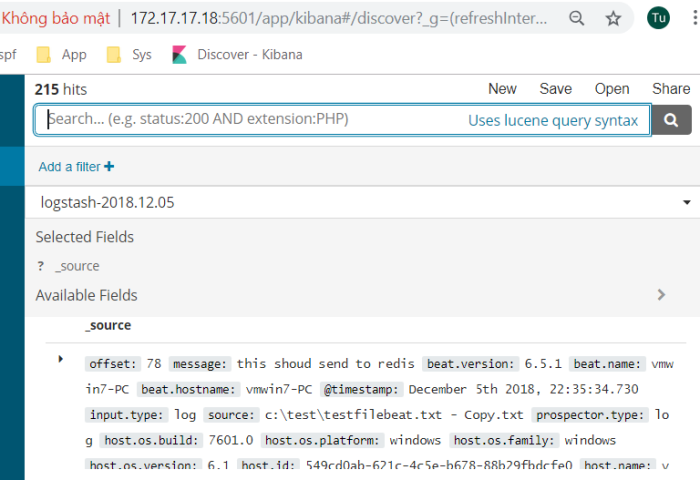0. Introduction
system: [1] windows run filebeat send file content to [2] redis service on [3] centos server which installed elk
- Configuration
[windows client]
=====FILEBEAT YML============
filebeat.inputs:
– type: log
paths:
– c:\test\*filebeat.config.modules:
path: ${path.config}/modules.d/*.yml
reload.enabled: true
setup.template.settings:
index.number_of_shards: 3setup.kibana:
output.redis:
hosts: [“172.17.17.18”]
password: “pass”
key: “filebeat”
db: 0
timeout: 5processors:
– add_host_metadata: ~
– add_cloud_metadata: ~
=====FILEBEAT YML============Running filebeat:
filebeat.exe -c filebeat.yml[CENTOST] – elk and redis server
===== Redis.conf============
bind 172.17.17.18
port 6379
requirepass pass
…
===== Redis.conf==================Logstash.conf===========
input {
redis {
host => “172.17.17.18”
port => 6379
password => “pass”
db => 0
data_type => “list”
key => “filebeat”
codec => “json”
}
}output {
elasticsearch {
hosts=>[“localhost:9200”]
}
}
=====Logstash.conf=========== - Kibana web interface
//
after generate data and create index in management